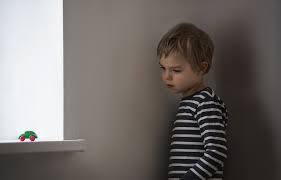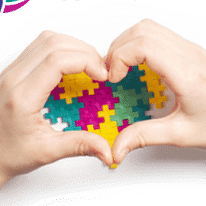- Contact Us
- (908) 874-0417
- Member Login
- Get Listed Now

As a parent, seeing your child grapple with anxiety can be tough. For those of us with children on the autism spectrum, it can be even more challenging because anxiety and autism often go hand in hand. That’s why it’s crucial for us to understand the connection between autism and anxiety and to seek appropriate treatment.
Autism is a neurological disorder that affects the way the brain processes information, including social interaction, communication, and behavior. It is a spectrum disorder, which means it affects people differently and to varying degrees. High-Functioning Autism (HFA) is a subtype of autism where individuals exhibit average or above-average intellectual abilities.
The symptoms of ASD can vary widely from person to person, but some common symptoms include the following:
Difficulty with social interaction and communication: Individuals with ASD often struggle with social communication and understanding social cues. They may have trouble initiating or maintaining conversations, understanding sarcasm or jokes, or interpreting tone of voice and facial expressions.
Repetitive behavior patterns or routines: People with ASD often engage in repetitive behaviors or routines, such as flapping their hands, rocking back and forth, or lining up objects. They may become upset if their routines are disrupted or changed.
Sensory processing issues: Individuals with ASD may be hypersensitive or hyposensitive to sensory input, such as sounds, lights, touch, or smells. They may become overwhelmed by certain sensory stimuli or seek out sensory input in unusual ways.
Difficulty with nonverbal communication: People with ASD may have trouble using and interpreting nonverbal cues, such as facial expressions, gestures, and body language. This can make it challenging for them to understand social situations and interact with others.
Difficulty making and maintaining friendships: Due to their challenges with social interaction, individuals with ASD may struggle to make and maintain friendships. They may also have difficulty understanding the social rules and norms that govern social interactions.
Limited interests and obsessive behaviors: People with ASD may have a narrow range of interests and become fixated on particular topics or activities. They may also engage in repetitive or ritualistic behaviors, such as lining up objects or insisting on one specific routine.
It’s important to note that while these are common symptoms of ASD, not all individuals with the disorder will exhibit all of these behaviors. Co-occurring conditions, such as anxiety, depression, or ADHD, can complicate a diagnosis and treatment.
Anxiety is actually a pretty common experience for a lot of people. Have you ever felt nervous before a big presentation or uneasy in a new social situation? That’s anxiety kicking in. It’s basically our body’s natural stress response to prepare ourselves for any perceived danger.
For some people, anxiety can become excessive and start to interfere with daily activities, leading to an anxiety disorder. Anxiety disorders are a group of mental health disorders characterized by extreme, irrational, or persistent worry and fear.
Some of the common symptoms of anxiety can be physical or mental/emotional. Physical symptoms may include sweating, shaking, racing heart, difficulty breathing, nausea, and stomach pain. Mental/emotional symptoms can include constant worry or fear, feelings of restlessness or agitation, difficulty concentrating, and trouble sleeping. It’s important to note that symptoms can vary from person to person, and the severity can also differ.
When it comes to anxiety in individuals with autism, it can present in a variety of ways that are different from what we typically see in neurotypical individuals. Some common ways anxiety can manifest in those with autism include:
Specific phobias: Children with autism may have a fear or phobia that is excessive and irrational, such as being afraid of a particular animal or object. This fear can cause a lot of suffering and make it difficult to participate in daily activities.
Separation anxiety: This is also pretty common in individuals with autism, even into adulthood. They may find it hard to separate from a caregiver or loved one, and the thought of being apart can cause significant distress.
Social anxiety: This is another one we see a lot in children with autism. They may struggle with social interactions, finding it difficult to make eye contact or engage in small talk. This can lead to a lot of anxiety in social situations and even avoidance behaviors.
OCD: Children with autism may have obsessive thoughts or compulsive behaviors that interfere with daily activities. This could look like having a strict routine they must follow or being obsessed with cleanliness.
Individuals with autism may experience symptoms that don’t fit neatly into a specific diagnosis, such as unusual fears or phobias like a fear of certain colors or shapes. It can be challenging to navigate anxiety when it presents itself in such unique ways. Still, it’s important to remember that support and resources are available to help.
Research shows that children with autism are more likely to experience anxiety than their neurotypical peers. Studies have estimated that 40-84% of children with autism experience anxiety, compared to 10-30% in typically developing children. Additionally, anxiety symptoms in children with autism tend to be more severe and persistent than in neurotypical children. There are several reasons why individuals with autism may be more susceptible to anxiety disorders.

With the proper treatment and support, anxiety in children with autism can be managed effectively.
Counseling and therapy are some of the most common treatments for anxiety in children with autism. Several types of therapy can be effective, depending on the child’s needs.
One type of therapy that can be helpful for children with autism is social skills therapy. This type of therapy focuses on teaching children social skills, such as how to initiate and maintain conversations, read social cues, and make friends. By improving their social skills, children with autism can feel more confident in social situations, which can help to reduce their anxiety.
Group therapy allows children to interact with others dealing with similar issues. This can be especially helpful for children with autism, as they can learn from each other’s experiences and support one another. Group therapy can also help children with autism feel less isolated and more connected to their peers.
Cognitive-behavioral therapy (CBT) is another effective treatment for anxiety in children with autism. CBT is a type of therapy that helps children identify and change negative thought patterns and behaviors contributing to their anxiety. CBT can be beneficial for children with autism, as it can help them to understand the link between their thoughts, feelings, and behaviors.
Occupational therapists can work with children to develop strategies for managing sensory overload, which often is an anxiety trigger in children with autism. Occupational therapists can also help children to develop coping strategies for dealing with stressful situations.
Speech therapy can also benefit children with autism who are struggling with anxiety. Speech therapists can work with children to improve their communication skills, which can help to reduce anxiety in social situations. By enhancing their ability to communicate, children with autism can feel more confident and less anxious in social situations.
Applied behavior analysis (ABA) therapy focuses on teaching children new behaviors through positive reinforcement. ABA therapy can be particularly helpful for children with autism, as it can help them to learn new coping strategies for dealing with stressful situations.
Medication, especially when combined with other interventions like therapy and coping skills, can be a helpful tool in managing anxiety. Selective Serotonin Reuptake Inhibitors (SSRIs) are commonly used to treat anxiety in children with ASD. A qualified healthcare professional should carefully consider and monitor medication, as it can have potential side effects and risks.
Coping skills are an essential component of managing anxiety in children with ASD.

With the right combination of therapy, coping skills, and accommodations, children with ASD can learn to manage their anxiety and lead happy, fulfilling lives. If you have a child with ASD and anxiety, seeking professional support is essential. ABA therapy is a highly effective treatment for children with ASD and can provide targeted interventions for managing anxiety. ABA therapy focuses on teaching new skills and behaviors while decreasing maladaptive behaviors. It can be tailored to the individual needs of each child. By starting ABA therapy today, you can help your child learn the skills they need to manage their anxiety and thrive.
If you are a parent or caregiver of a child with autism who is struggling with anxiety, it’s important to work with a qualified therapist or counselor who has experience working with children with autism.
Start them as early as possible with the help of professionals, such as those at Circle Care Services in New Jersey. Your child can learn to manage their anxiety and thrive. You can rest assured that whoever is assigned to work with your child is invested in the growth of your child’s development and enjoys what they do for a living. So work with them, communicate with them, and encourage them.
Sign up for our newsletter to find out more or receive more tips!
|
|
Added By: | |

|
Circle Care Services Family Activities Highland Park, NJ 08904 US |
| View Profile » Contact » | |
